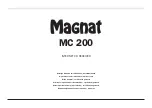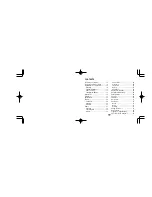
3.0. Smart Card Reader
3.1. Supported Card Types
The BioCARDKey can operate MCU card with T=0 and T=1 protocol. The table presented in
Appendix A explains which card type selection value must be specified for the various card types
supported by the reader.
3.1.1.
Microcontroller-based Smart Cards (Asynchronous Interface)
The BioCARDKey supports EEPROM microcontroller-based cards with internal programming voltage
(VPP) generation and the following programming parameters transmitted in the ATR:
PI1 = 0 or 5
I = 25 or 50
The BioCARDKey performs the Protocol and Parameters Selection (PPS) procedure as specified
in
ISO7816-3: 1997
.
When the card ATR indicates the specific operation mode (TA
2
present; bit b5 of TA
2
must be 0) and
that particular mode is not supported by the BioCARDKey, the reader will reset the card and set it to
negotiable mode. If the card cannot be set to negotiable mode, the reader will reject the card.
When the card ATR indicates the negotiable mode (TA
2
not present) and communication parameters
other than the default parameters, the BioCARDKey will execute the PPS and try to use the
communication parameters that the card suggested in its ATR. If the card does not accept the PPS,
the reader will use the default parameters (F=372, D=1).
For the meaning of the aforementioned parameters, please refer to
ISO7816, part 3
.
3.2. Smart Card Interface
The interface between the BioCARDKey and the inserted smart card follows the specifications of
ISO7816-3
with certain restrictions or enhancements to increase the practical functionality of the
BioCARDKey.
3.2.1.
Smart Card Power Supply VCC (C1)
The current consumption of the inserted card must not be higher than
50mA
.
3.2.2.
Programming Voltage VPP (C6)
According to ISO 7816-3, the smart card contact C6 (VPP) supplies the programming voltage to the
smart card. Since all common smart cards in the market are EEPROM based and do not require the
provision of an external programming voltage, the contact C6 (VPP) has been implemented as a
normal control signal in the BioCARDKey. The electrical specifications of this contact are identical to
those of the signal RST (at contact C2).
3.2.3.
Card Type Selection
The controlling PC has to always select the card type through the proper command sent to the
BioCARDKey prior to activating the inserted card.
For MCU-based cards the reader allows the user to select the preferred protocol, T=0 or T=1.
However, this selection is only accepted and carried out by the reader through the PPS when the card
inserted in the reader supports both protocol types. Whenever an MCU-based card supports only one
protocol type, T=0 or T=1, the reader automatically uses that protocol type, regardless of the protocol
type selected by the application.
3.2.4.
Interface for Microcontroller-based Cards
For microcontroller-based smart cards only the contacts C1 (VCC), C2 (RST), C3 (CLK), C5 (GND)
and C7 (I/O) are used. A frequency of 4 MHz is applied to the CLK signal (C3).
Document Title Here
Document Title Here
Document Title Here
AET60 Reference Manual
Version 1.7
Page 5 of 24
www.acs.com.hk






































